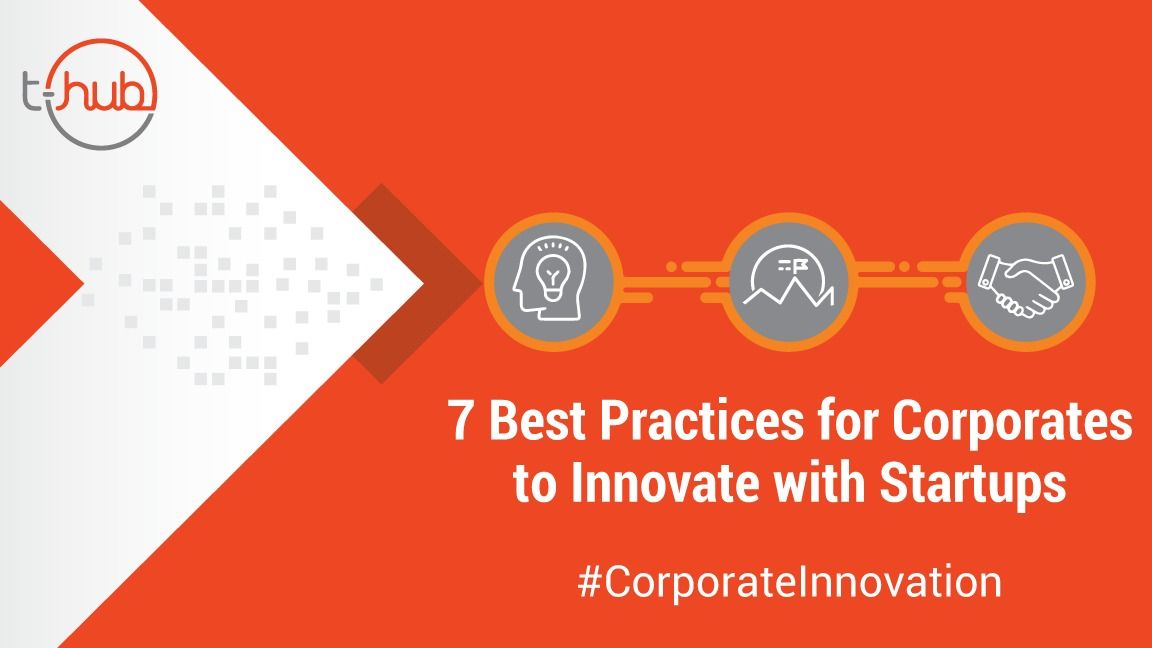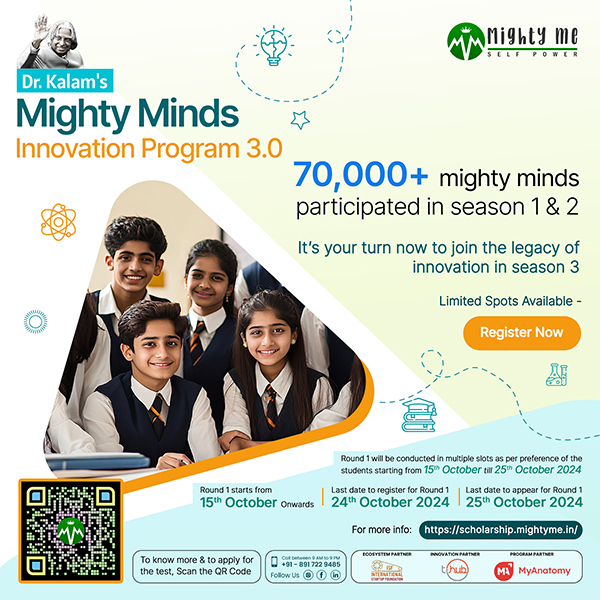“Innovation” — Undoubtedly this is the most trending buzzword that we hear. Is innovation something which occurs in a R&D division of the corporate or is it something more than that? Why does this word keep popping so frequently and stressed upon in most of the board discussions/ team meetings/ strategy meetings? In this article, let us take a closer look at this word and understand more about “Innovation” and its role.
Over the past few years, Innovation has innovated itself! It has completely evolved. It is a thing of the past, where the corporate R&D centres stayed far away from startups and external innovation platforms. There was no overlap between them and the idea of working together of these two entities was felt to be totally counterintuitive owing to their mismatch in their work cultures. The corporate R&D divisions were usually associated with a buttoned-up approach and the startups identified with a disruptive approach.
Moving to the present times, Corporate R&D has undergone revolutionary changes. Gone are the days of having stand-alone R&D centres and innovation being handled by these divisions exclusively. Corporations are adapting a new approach for creating R&D nodes, which are not created from scratch but by working with the advantage of existing ones to create new synergies which we call corporate innovation.
So how does corporate innovation work?
We believe corporate innovation is very much essential for success and longevity of any organisation — be it public listed companies, private organisations, public sector units or governments. Corporates are very good at advancing existing business models but when it comes to identifying disruptive opportunities for expansion and growth, they are not quite successful. Startups are quick and are also good at re-imagining, how the industry can disrupt and grow. Startups possess what the corporates lack and vice-versa. For corporations, innovation with the capability of quick disruption is the need of the hour to tackle today’s competition, so as to penetrate the markets quickly. So, it’s very essential for the corporates to have a symbiotic relationship with startups to ensure successful business.
T-Hub from its study conducted on 60 corporate partners, observed that majority of them have a dedicated innovation team with a primary objective to implement pilot projects across their business units i.e. to strategically implement new projects. The initial step for that is to source startups in different ways like internal corporate innovation programs, external accelerators, reaching out to incubators, corporate venture arms. During the scouting process, the innovation team closely evaluates the startups under certain criteria.
General evaluation criteria include:
- Use case — Startup Solution Fit.: How clear is the problem statement? MVP readiness? Is it addressing a large market?
- Market Potential — Differentiation: Are long-term pans in place? How different/ differentiated in the product?
- Business Model: Does the startup have realistic and long-term plans?
- Customers: Is there a marketing strategy identifying key customer acquisition channels?
- Go-To-Market Readiness: Likelihood to enter market in 6–12 months?
- Technology Used: How differentiated if the offering from a tech perspective?
- Innovation Connect: Is it addressing a customer problem and is it scalable?
Once the startup clears the evaluation criteria and proves to be a good fit, the corporate innovation team selects the startup to run a PoC. Typically, PoC developing phase varies from accelerator to accelerator, Corporates choose to have it an average of 4 to 6 months. During this period, the corporates evaluate the startups with various parameters to ascertain the capabilities of the collaboration to move forward.
Best practices for partnering with startups
T-Hub has done 25+ corporate innovation projects where-in it was instrumental in creating 400+ corporate — startup connects. From that rich experience, we at T-Hub conducted a study to identify and list down the best practices for both corporates and startups to partner with each other.
a) Have a clear and broad problem statement:
Corporates should be very clear about their goals and should be able to communicate the same with the startups that apply for the innovation program. Establishing a clear problem statement will enable them to have a more productive experience for both the entities. Once the goal of the corporates is very clear to the startups, they can make their refined pitch, specific and tailored around the problem statement.
b) Ensure Problem Statement/ Use Case — Startup fit:
Before agreeing on a partnership, corporates need to ensure that the startup they choose will be a good fit into the organisation or BU’s needs. Corporate innovation team needs to take input from the decision makers of the relevant business units before agreeing on the partnership/ PoC. Corporates can have a productive partnership if they ensure that the startups fit the corporate culture.
c) Provide mentorship through relevant employees for achieving successful PoC:
Achieving a successful PoC that fits the corporate requirement is a tough task as innovation is difficult to foster in any organisation, especially in corporates, which are bureaucratic and navigating hierarchies takes a tremendous amount of time. So the corporate innovation team should assist and ensure that the startup teams are provided with right connections in the hierarchy and help them tie up with the mentors in the relevant Business units to guide them through their processes/ internal policies/ stakeholder relations etc. Mentors should also be able to put the startups in-front of the decision makers who can help the startup to advance further with more ease in terms of partnership or implementation of the PoC.
d) Pre-defined Post Pilot Framework
Post completion of PoC, it is of paramount importance to ascertain whether the PoC is successful or not? The basis and the criteria have to be pre-defined to evaluate it quantitatively and qualitatively as per the chosen metrics. The parameters should include key elements like resource allocation, commercial budget, timeline of implementation, scalability etc.
Timely decisions post implementation of PoC on the solution provided by the startup are key to a successful collaboration. A way ahead has to be determined by laying out the basic framework on the future tasks and milestones to be achieved together for a smooth innovation process.
e) Robust Communication Channels:
T-Hub from its study on its corporate partners found that communication and empowerment are key pillars for a successful culture of innovation. Innovation teams connect with various business units of the corporate and obtain buy-ins from them in the process of forging a partnership with a startup. A strong communication channel across different teams within the company will create the foundation of change required during a long term partnership.
Communicating effectively not only within the company but also communicating with the startups is a characteristic of our effective partners. An effective communication channel aids in reducing the time taken for evaluations and decision processes which streamlines the innovation process. This would in-turn encourage the startups to work efficiently and this collaboration bears fruition in the relevant goals.
f) Curtailing the Procurement Processes:
Streamlining the legal and security processes, which the startups have to undergo for the partnership, will have a great impact on the timeline and smooth functioning of the innovation process. Conventional documents running into a number of pages have to be done away with and a specialised questionnaire or document dovetailing it to the startup and the area of the collaboration has to take center stage.
Multiple documents and redundant questions have to be eliminated for a quick review of documents. Especially, if the startup solution caters to multiple departments of the company, a unified document comprising all the requirements of the departments may be prepared to avoid multiple screening and procurement processes.
g) Test Data for the Startups
Coming up with the right solution will be the endeavour of the startup. However, the right test data will only test the authenticity and the accuracy of the solution. Mostly, the solution only gets as good as the level of the data available to test the solution. So, the corporate will have to smoothen the process of providing the relevant test data to the startup within the security protocols and policies of the company. This will play a key role in streamlining the overall innovation process of the collaboration.
So, to conclude, innovation is not something which is limited to R&D centres, innovating keeps innovating itself and urges us to catch-up and evolve. Above are a few best practises from our perspective, innovation knows no bounds and it pushes for an out of the box approach, feel free to think beyond these best practices or even improve them further. We encourage you to share your thoughts and ideas!
— Shalini Vaddy, Sr. Business Development Manager, Corporate Innovation, T-Hub
We power Corporate Innovation through high-impact partnerships and transform your business models for the better. Read more, here.






